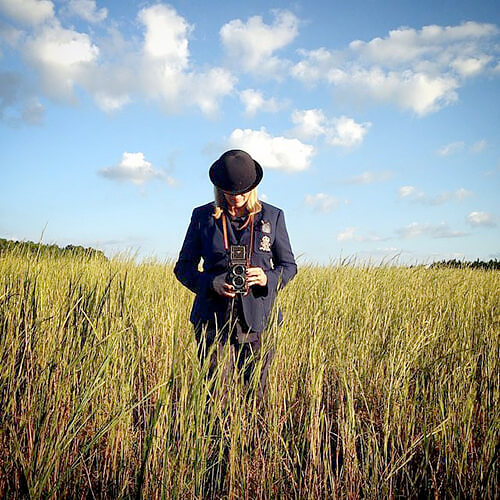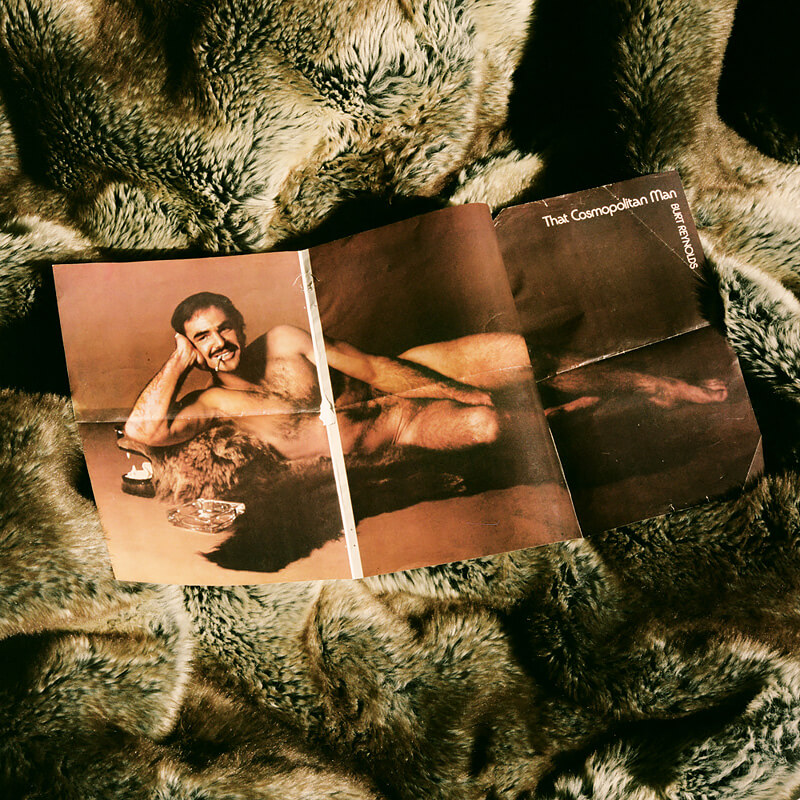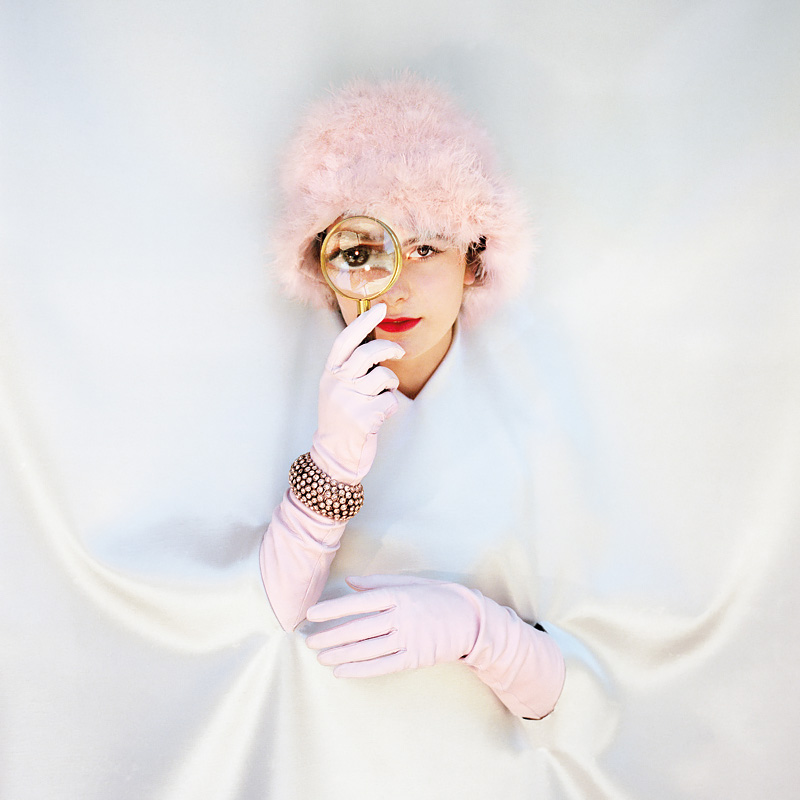After a career as a New York Fashion Editor and working along side the greats of fashion photography,
Aline Smithson discovered the family Rolleiflex and never looked back. An artist now represented by galleries in the U.S. and Europe and published throughout the world, Aline continues to create her award-winning photography with humor, compassion, and a 50-year-old camera. We asked her a few questions about her life and work.
All About Photo: First of all, congratulations for being a finalist for the prestigious Taylor Wessing Prize and the exhibition at the National Portrait Gallery in London in October! But before you tell us more about this accomplishment can you tell us more about your background? Can you tell us about your first introduction to photography? What drew you into this world?
Aline Smithson: I never thought I would end up a photographer. I went to art school for painting and painted for many years afterwards-large abstract oils. But I always loved photography and was surrounded by it. My father was a hobbyist photographer with a darkroom in the basement, my uncle was an editorial/art photographer, and I worked with amazing fashion photographers for a decade in my role as a Fashion Editor. Much of my youth was spent with my nose deep in a magazine (ranging from National Geographic to Vogue) or decoding album cover art for secret messages, which in retrospect, accounts for my love of the square image. I was always drawn to images that told a story within a single photograph... or photographs that transported and inspired. Eventually I found my way to photography and have never looked back.
AAP: Why did you decide to end your career as a Fashion Editor and decide to focus on your own work?
Aline Smithson: After working as a Fashion Editor in New York for ten years, my husband decided to make a career change and pursue an Architecture MFA and got accepted into a program at UCLA, which brought me back to Los Angeles and ended my career in New York. I worked as a free lance stylist for awhile, but I had young children and it was too hard to work long hours. I continued to paint during my years in New York, and also in Los Angeles, but then, as the family visual historian, decided to take a beginning photography. It was in that class I discovered my uncle's twin lens Rolleiflex in the garage and it shifted my focus onto photography...I am still an artist, now using a camera instead of a paintbrush.
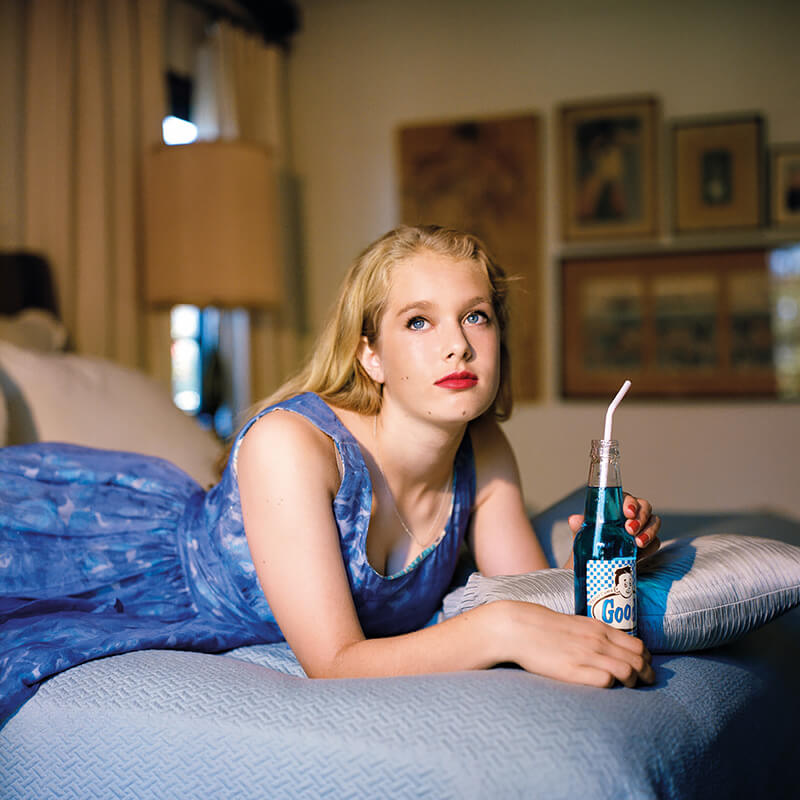
Lexie with a Pop, from Hollywood at Home
: I didn't know anything, didn't have photo community-I was working in isolation. I made a lot of mistakes in the beginning-but I've always felt that you learn more from mistakes than success. I feel lucky to have started my career in the darkroom era, learning photography and all it's traditions, with great reverence for the processes of film and darkroom methodologies.
AAP: Why did you create Lenscratch?
Aline Smithson: It was around 2006, when the idea of personal blogs came into the zeitgeist...and everyone had a blog attached to their website or as a separate entity. A friend suggested I start a blog, and for the first 6 months I would post an image and wait for all 5 of my friends to give me the thumbs up. After awhile, it felt hollow and ridiculous, and I realized I could use the platform to learn about the photography community, beyond my circle of friends... and as an educator, I realized that my students could benefit from it too. So I made a commitment to myself to write about a different photographer every day. It's been almost 12 years and we are still going strong, but now we take Sunday's off. I still do the bulk of the writing, but have guest editors and writers that add excitement to the publication.
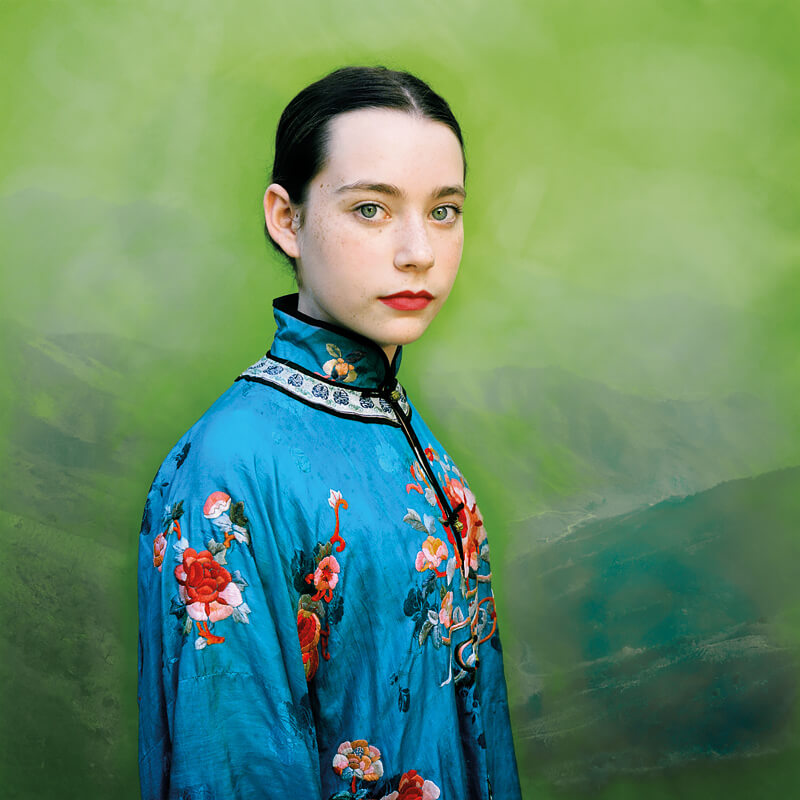
Lucy in Teal, from Revisiting Beauty
: I have to be honest and say that it's not easy...the part that suffers the most is my personal work. I try and carve out time to make work, but it doesn't always happen. If you ask my husband, I work 24/7. I haven't figured out how balance things-I just do the best I can. Eventually, I will let some things go so I can focus more on my work.
AAP: Why do you only shoot film? Have you ever been tempted by digital photography?
Aline Smithson: Years ago, I bought a digital camera at Costco and never took it out of the box. Eventually, I gave it away.
I love the slowed-down nature or working with film... I love the traditions of the film experience: loading a roll and waiting to see the results. I love rolling my 120 film nice and tight and then licking the sticker that keeps it that way. Each roll is a little gift. I do all my editing in the camera, shooting very few images. I also like that I have a tangible legacy to pass on... if my hard drives crashes, I still have my photographs.
As an editor I look at thousands of images each week and I can always spot a film image... there is a nuance to the color and quality that can't be replicated with digital. Digital shooters are always bemoaning how many images they have to edit, but that don't have to shoot that much!
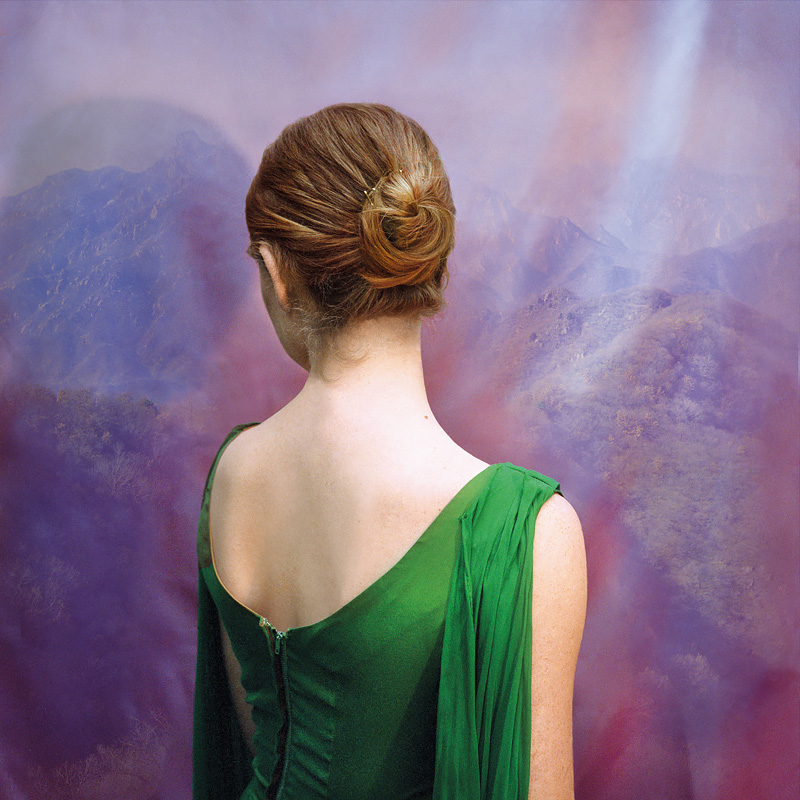
Mae Turned, from Revisiting Beauty
: My main camera is a 1960 twin Lens Rolleiflex (I have 5), I also have a couple of Hasselblad's, a Maymia RZ67, a Mamiya 6 and 7 and a boat load of toy cameras.
AAP: Do you spend a lot of time editing your work?
Aline Smithson: Very little. I shoot very little as I edit before I click the shutter.
AAP: How did you come up with the idea of your project In Case of Rain that was recently on view at Panopticon Gallery in Boston as part of the Bibliophile Exhibition?
Aline Smithson: This work came about when I observed that we are losing our connection to the tactile. So much of what I was entertained by as a child-board games, paper dolls, books, etc-are now on a screen and my children are losing their connection to these objects. I wanted to document them as a way to remember them with fondness.
AAP: Can you talk about your new project, Fugue State, is on exhibition at the the National Portrait Gallery?
Aline Smithson: I created this on-going project when I observed that my children have never made prints of their photographs, preferring to experience them on a screen. It made me realize the potential loss of the photograph as object to future generations... my children may not have any images to show their grandchildren as they rely on social media sites to host their photographic legacies.
I created a series of portraits and then wounded the film emulsion to speak to this loss, and the potential disappearance of the photographic image.
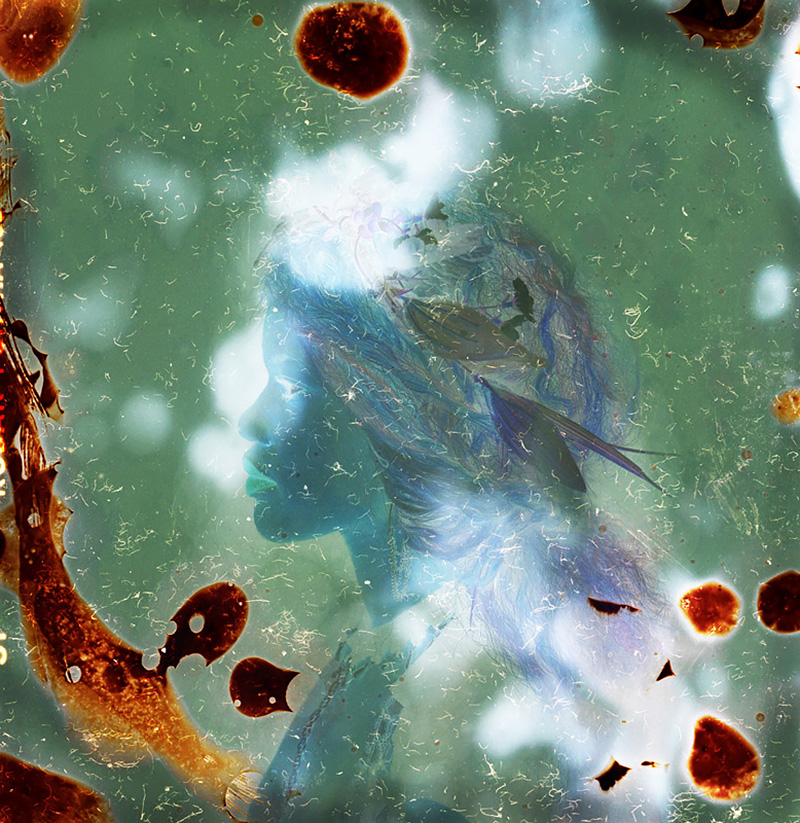
Mohanned and Munir, from Fugue State
: I have a few series that use humor, but like life, I like to mix it up and explore all sides of the human experience. Lately, I've been wanting to get back to humor-the world needs to laugh.
AAP: There is always a lot of poetry in your work and we feel in each your images a connection with your subjects. They evoke kindness to me. Are the people you photograph only close ones? People you have a connection with?
Aline Smithson: I only photograph people I know, so my connection is deeper and more intimate. When I create a portrait, it is my goal to elevate the person in front of the lens. And of course, I fall in love with my subjects and spend years revisiting that split second experience. They become imprinted on my psyche.
AAP: You will be teaching a workshop in the south of France in June 2019, Room to Dream, as well a photography workshop at Santa Fe next spring and at LACP, why is it so important for you to teach all over the world?
2019 is the first time I will be teaching outside of the U.S. – France in the Spring and San Miguel, MX in the Fall...needless to say, I am so excited. There is magic to be found everywhere and beyond the place, it's the experience of a group of photographers coming together to celebrate their love of the visual. We will be changed by the experience, be bonded and inspired by each other.
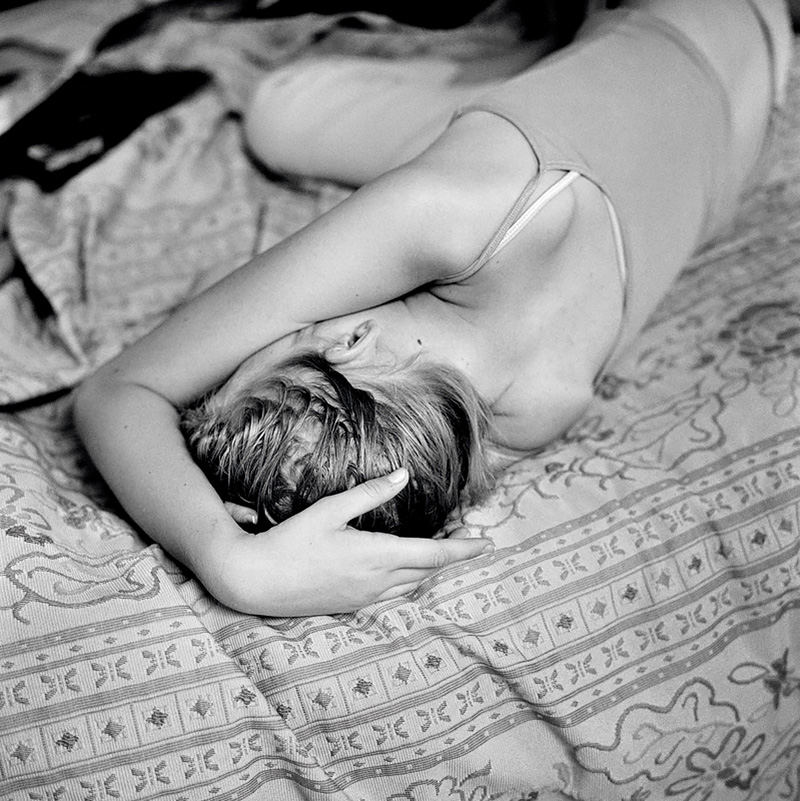
Hotel Fiorita, from Daughter
: Yes, and no...I am not hungry for validation. For some folks, getting into competitions becomes an addiction, but now I am more selective, looking for a juror that I want to have see my work, or a venue or publication I would like to be part of. I get rejected all the time and that's just part of the process.
AAP: Why is the Taylor Wessing Prize special to you?
Aline Smithson: The National Portrait Gallery in London has always been one of my favorite museums and to see my work hanging in that glorious building has been one of the best moments in my career. My whole family went to London for the opening and it was a truly magical evening. Everyone in the show was so excited to be part of the event. Also to be recognized for my portraiture was so meaningful.
AAP: Is it important to be recognized as a woman photographer?
Aline Smithson: Yes, but I am a humanist and believe we all need to be recognized. Women are making huge advances in the photography world, much to do with so many women in places of influence-curators, gallerists, editors, etc.
AAP: Which members of the jury are most intimidated/excited to meet?
Aline Smithson: I got to meet and chat with several of the curators at the NPG and that was a thrill. I was also so excited to meet
Rinko Kawuchi, who had a small exhibition in conjunction with the exhibition.
AAP: What do you think is your biggest accomplishment?
Aline Smithson: Raising two happy and creative children, having a long meaningful marriage, and creating a community of amazing photographers in Los Angeles and beyond, through teaching and Lenscratch.
AAP: What advice would you give someone who would like to become a photographer today?
Aline Smithson: Do it! But don't expect and income from it...do it because you have to.
AAP: What mistake should a young photographer avoid?
Aline Smithson: Don't rush it...stay anonymous as long as possible!
AAP: If you weren't a Photographer, what would you be doing?
Aline Smithson: I still have lots of things I would love to accomplish: become a filmmaker, an actor, open a store, design clothes, and be a detective. I'm taking lots of hip hop classes in my dream of being a back-up dancer... and why not!
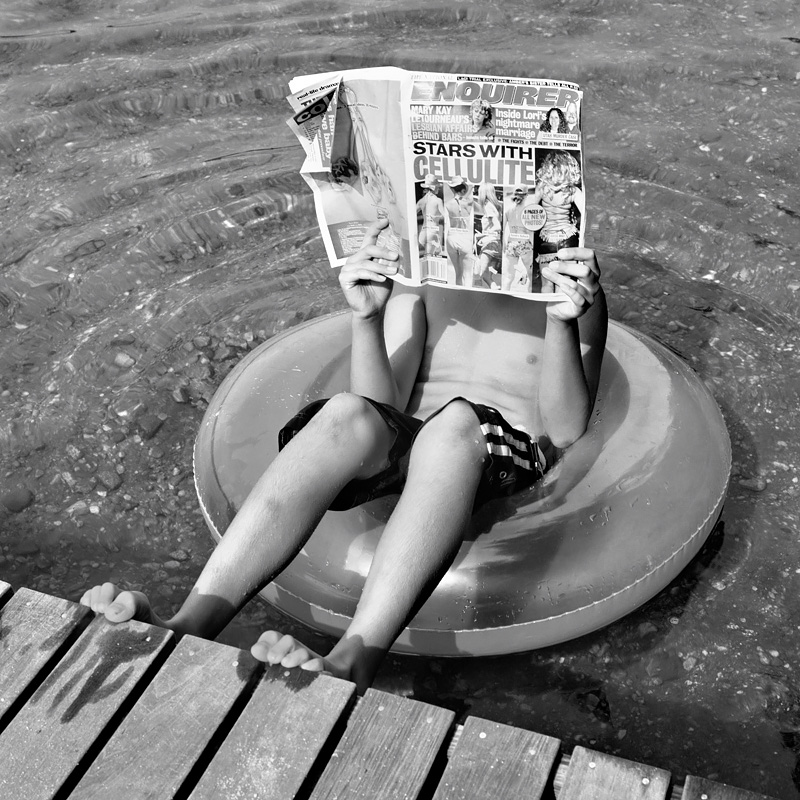
Not as Interesting, from Shadows and Stains
Aline Smithson is a Los Angeles based artist best known for her conceptual portraiture and a practice that uses humor and pathos to explore ideas of childhood, aging, and the humanity that connects us. She received a BA from the University of California at Santa Barbara and was accepted into the College of Creative Studies, studying under artists such as William Wegman, Alan Ruppersburg, and Charles Garabian. After a career as a New York Fashion Editor working along side the greats of fashion photography, Aline returned to Los Angeles and her own artistic practice.
She has exhibited widely including over 40 solo shows at institutions such as the Griffin Museum of Photography, the Fort Collins Museum of Contemporary Art, the Shanghai, Lishui, and Pingyqo Festivals in China, The Rayko Photo Center in San Francisco, the Center of Fine Art Photography in Colorado, the Tagomago Gallery in Barcelona and Paris, and the Verve Gallery in Santa Fe. In addition, her work is held in a number of public collections and her photographs have been featured in numerous publications including The New York Times, The New Yorker, PDN (cover), the PDN Photo Annual, Communication Arts Photo Annual, Eyemazing, Soura, Visura, Shots, Pozytyw, and Silvershotz magazines.
Aline is the Founder and Editor-in-Chief of Lenscratch, a daily journal on photography and has been teaching at the Los Angeles Center of Photography since 2001. In 2012, Aline received the Rising Star Award through the Griffin Museum of Photography for her contributions to the photographic community. In 2014, Aline's work was selected for the Critical Mass Top 50 and she received the Excellence in Teaching Award from CENTER. In 2015, the Magenta Foundation published her first significant monograph, Self & Others: Portrait as Autobiography. In 2016, the Smithsonian Air and Space Museum commissioned Aline to a series of portraits for the upcoming Faces of Our Planet Exhibition. Her work is currently on exhibition at the National Portrait Gallery in London as a finalist in the Taylor Wessing Prize.
